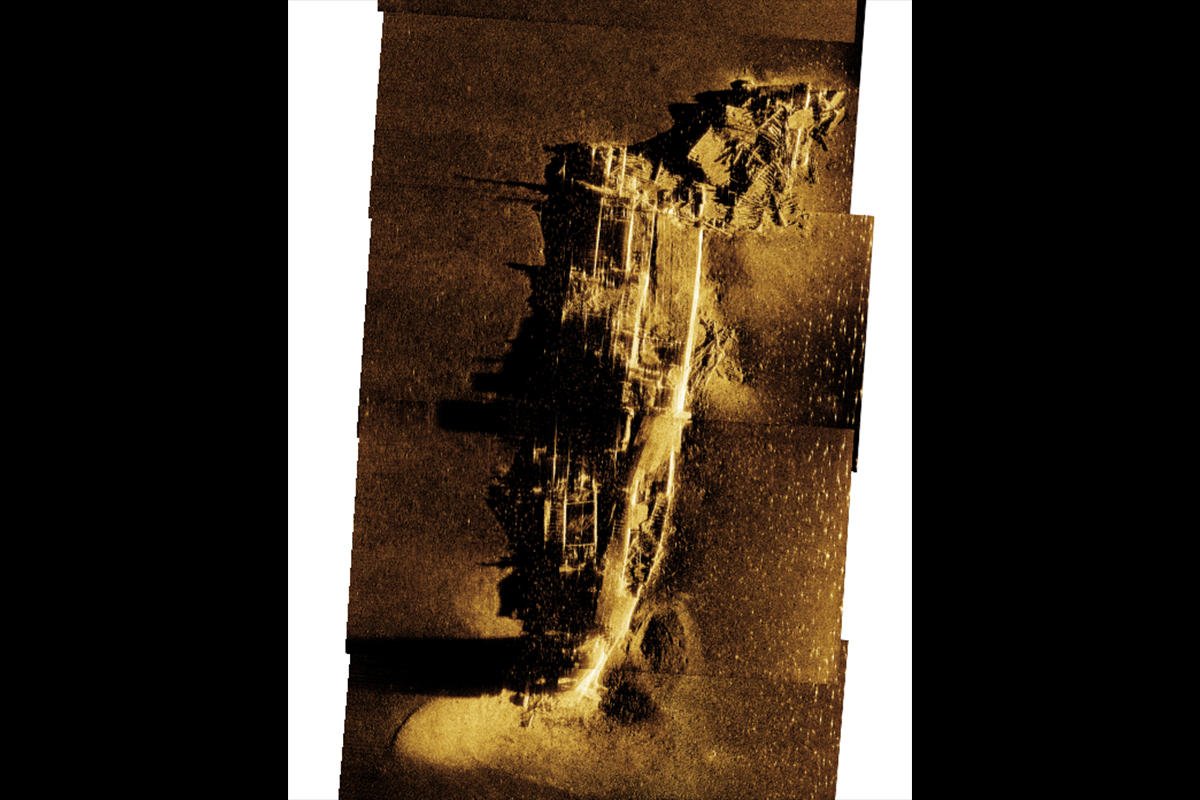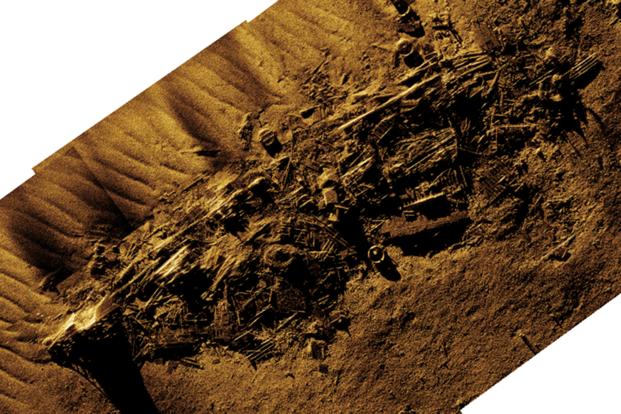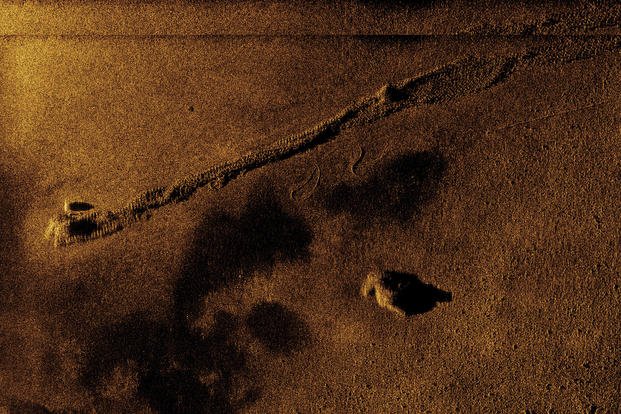
The only two Japanese ships believed to have been sunk directly off the U.S. coastline in World War II have been located by researchers scouring the seafloor off Alaska, according to a release from East Carolina University in North Carolina.
Both the Cheribon Maru, sunk in 1942, and the “fairly intact” Kotohira Maru, sunk in 1943, are “mass graves” for Japanese seamen who died during a campaign known as the “Forgotten Battle,” according to project co-leader Dominic Bush of Ships of Discovery.
That battle centered around the Aleutian Island of Attu, which was captured by Japanese forces. Attu sits about 550 miles from Russia’s Kamchatka Peninsula.
“Though fighting on the Aleutian Island was limited to three weeks in May 1943, Attu had been the site of significant military activity ever since its invasion by the Japanese military on June 7, 1942,” the team reported.
“That offensive marked the first time a foreign power occupied U.S. territory in North America since the War of 1812 — a feat that has not since been repeated. Following the liberation of the remote island by American forces, it was transformed into a military outpost that operated throughout the war’s duration.”
A team of archaeologists, hydrographers and robotic engineers surveyed the underwater battlefield for about a week looking for artifacts, including ships and aircraft.
In addition to the two Japanese freighters, the U.S. Army cable layer S.S. Dellwood was found “81 years to the day of its sinking” on July 19, 1943, officials said.
Sonar and ROV imagery revealed the Dellwood shipwreck is severely damaged. That is likely due to the wreck being deemed a navigational hazard, which prompted the military to blow it up, officials said.

What They Found
A joint American and Japanese research team was involved in the project, which counted as the first seafloor archaeological survey around Attu, officials said.
The three vessels found have not been seen in more than 80 years, researchers noted. All are within Alaska’s state waters.
Among the unexpected observations the made during the survey: the 3,000-ton Cheribon Maru is so “draped in kelp and other marine growth” that it can’t be clearly seen, and the 5,000-ton Kotohira Maru is more than a half-mile from its last known location.
The exact number of people who died on the two vessels is not known — due to Japanese records being destroyed — but estimates put it in the dozens, Bush told McClatchy News.
In the case of the Kotohira Maru, only two crew members were rescued, he said.
“The Kotohira Maru is a mass grave and when you see it on the seafloor, it’s moving. Reports say it was hit twice and the bow was broken off, and that’s what we found,” Bush said.
“It is in amazing condition on a sandy seafloor and really stood out. You can see the masts are still standing and everything is still there, along with the wheelhouse. It gives you a really clear picture of what it looked like.”
The ship was carrying provisions, housing materials and fuel to Japanese soldiers on the island, and it’s unclear if it ever unloaded the cargo.
S.S. Dellwood sank when it hit a “submerged rock pinnacle” while being towed to a dock, and now sits in 100 feet of water, the researchers said.
High-resolution sonar also identified countless smaller artifacts on the seafloor, “including dozens of anchors, chains, mooring blocks, and sunken buoys, as well as examples of materials used in base construction, such as timbers, piping, and cable.”
“Perhaps most interesting was the numerous sections of anti-submarine netting that could be clearly discerned,” the team reported.
“With the centimeter resolution offered by synthetic aperture sonar, the interconnected metal rings of these nets, reminiscent of chainmail armor, were documented in stunning detail.”
The netting has fallen over time and is now draped across rocks and the seafloor, Bush said.
No aircraft were located, but some of the scattered debris could be from destroyed aircraft, he said.
The project was led by Bush, a recent East Carolina University alumnus, Dr. Jason Raupp, an assistant professor of Maritime Studies in East Carolina University’s Department of History and Dr. Caroline Funk, an assistant research professor at the University of Buffalo.
“Overall, the project marks the beginning of what is sure to be an increased focus on the oft-forgotten Aleutian Island campaign and by extension Alaska’s World War II history,” Raupp said in the release.

The ‘Forgotten Battle’
The 1942 Japanese attack on the Aleutian Islands lasted from June 3-7 and included bombings on two islands and invasions of Attu and Kiska, the National Park Service reports.
Forty residents of Attu were “taken to Japan for the duration of the war,” and 16 died there of causes ranging from disease to starvation, the NPS reports.
U.S. aerial and naval raids targeted the island for 10 months, then the Army launched an amphibious assault on May 11, 1943, according to the East Carolina University Program in Maritime Studies.
“After three weeks of intense combat, the U.S. forces prevailed, and Attu was transformed into a military outpost. In addition to the fighting on land, numerous ships, aircraft, and other vessels are reported to have sunk in the waters around Attu,” the program reports.
The 18-day Battle of Attu was one of the deadliest of the war, “but it remains one of the least well-known,” the National Park Service says.
Nearly 1,700 U.S. soldiers were killed or wounded by the Japanese, and more than 2,100 “were taken out of action due to disease and non-battle injuries,” the NPS says. The harsh conditions included 120 mph winds, relentless rain and dense fog.
“Men had to keep moving to stay warm, even if it meant exposing themselves to enemy fire. Those who could not walk, crawled,” the NPS says.
“When possible, the Americans took the superior clothing from dead Japanese soldiers, risking being shot by their own troops when they saw the enemy uniforms.”
Among the Japanese, 2,351 were killed and 28 were captured, NPS historians say.
The seafloor survey was jointly funded by NOAA Ocean Exploration and the National Park Service’s American Battlefield Protection Program.
(c) 2024 the Merced Sun-Star (Merced, Calif.)
Visit the Merced Sun-Star (Merced, Calif.) at www.mercedsunstar.com
Distributed by Tribune Content Agency, LLC.
© Copyright 2024 Merced Sun-Star. All rights reserved. This material may not be published, broadcast, rewritten or redistributed.
